Alterations [4.1.6(1), (2)]
In alterations, access is required where toilet or bathing facilities are altered. Compliance is governed by the scope of work and can be followed on an element-by-element basis unless the work, when taken together, amounts to a full alteration of the space. For example, if the work is limited to specific elements, such as replacement of a lavatory and floor coverings, then at a minimum each altered element must comply with ADAAG. Work broader in scope that may include such things as reconfiguration of walls and plumbed fixtures, generally requires full room access. Restroom accessibility is also required as part of a "path of travel" to altered primary function areas to the extent it is not disproportionate to the overall cost.
Room Dimensions
ADAAG does not specify room dimensions; these vary according to the number and configuration of fixtures, room layout, and the way various spatial requirements are met. For single-user toilet rooms, key considerations include the configuration of water closets and lavatories, clear floor spaces required at fixtures, turning space, the location and swing of doors, and maneuvering space at doors. An important consideration is whether or not space for side transfers is provided.
The following illustrations provide several examples of complying accessible single-user toilet rooms. Note, however, that the ADAAG requirements apply to multi-user toilet rooms and bathing facilities as well.
Single-User Toilet Rooms: Side Transfer Space
These drawings illustrate the space requirements for a single-user toilet room with a single plumbing wall. Clear floor space at water closets at least 60 inches wide allows room for side transfers. Lavatories can abut this space (or overlap it as shown on page 89).
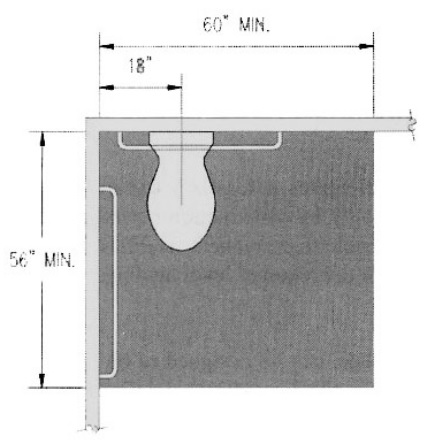
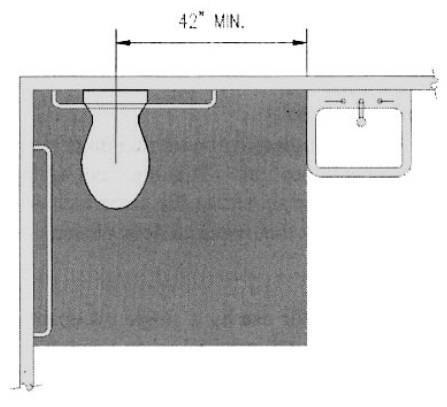
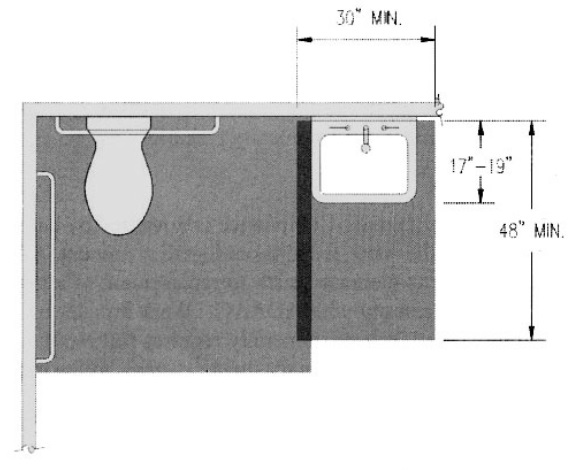
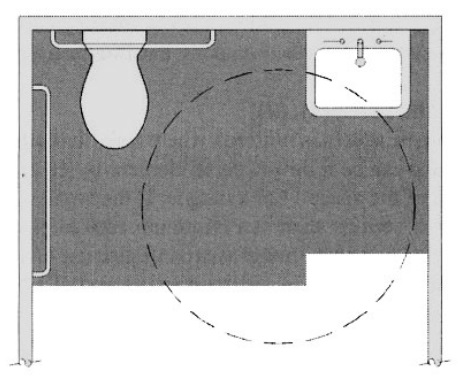
Clear floor space should be centered at lavatories. This clear floor space, which can overlap space required at water closets, must extend 17 to 19 inches below the lavatory. Where provided, towel dispensers within reach from the lavatory will allow people to dry their hands before maneuvering from the fixture (see page 76). Knee and toe clearances below fixtures can overlap turning space, although this should be limited where the space is confined to the minimum (see page 15). Turning space can be provided in the form of a 60 inch diameter circle (as shown) or T-shaped space.
Doors must comply with 4.13, which specifies maneuvering clearances. The location of doors is based on their size and sweep. Doors can swing into the turning space but not the clear floor space required at fixtures. In-swinging doors clearing fixture clearances usually determine the minimum room depth.
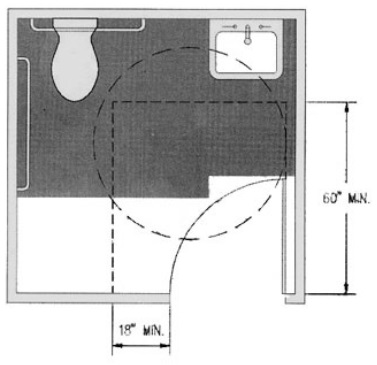
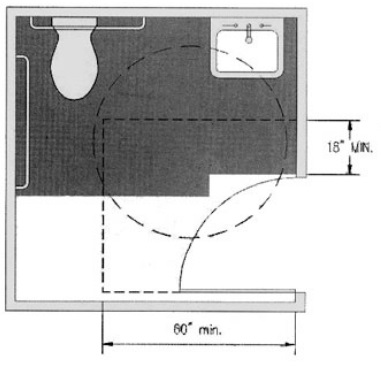
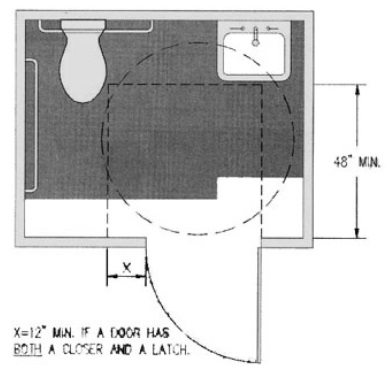
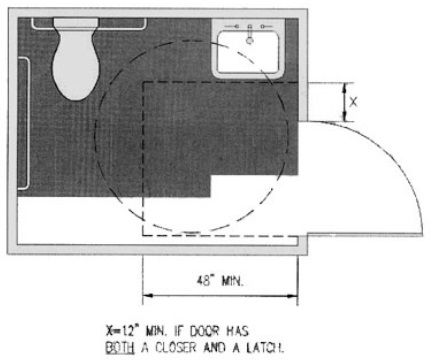
Where doors can swing out, the minimum room depth is typically determined by the lavatory depth and door clearances for forward approaches; (turning space is usually available within these dimensions). For side approaches, it is often determined by the turning space and the degree of fixture overlap. Latch-side clearance 12 inches minimum is required on the push-side of doors equipped with both a closer and latch; otherwise, clearance beyond the stop is not required.
Recessed Lavatories
Recessing lavatories can provide space for side transfers while allowing a narrower room width. The rear grab bar determines the minimum distance of the lavatory from the water closet. (If the clear floor space at the lavatory is obstructed on both sides more than 2 feet then it must be at least 36 inches wide instead of 30 inches.)
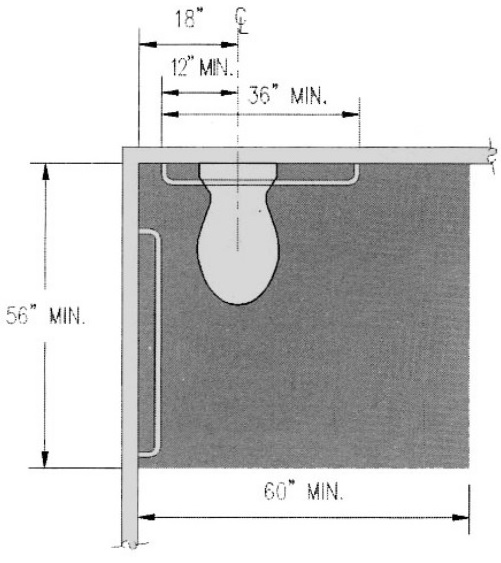
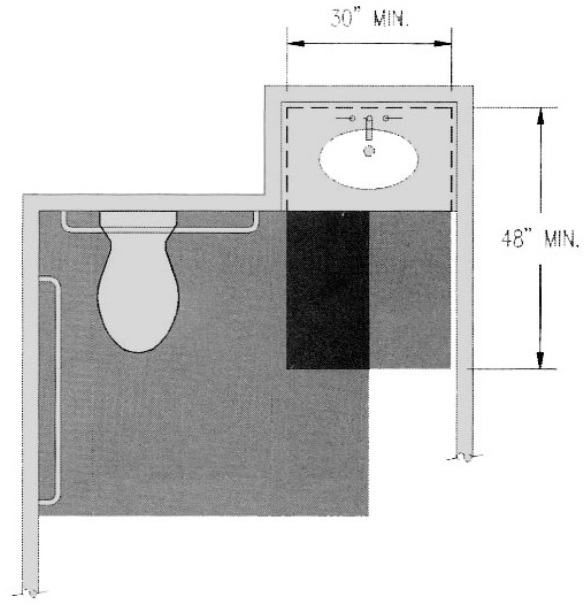
In-swinging doors must clear fixture clearances and door clearances must clear the water closet fixture (verify toilet length).
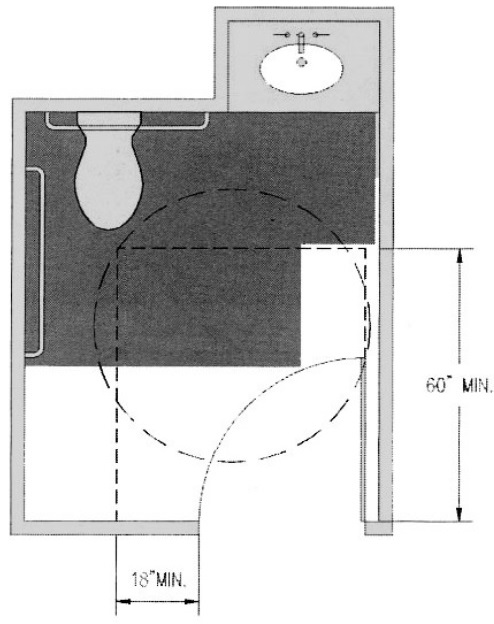
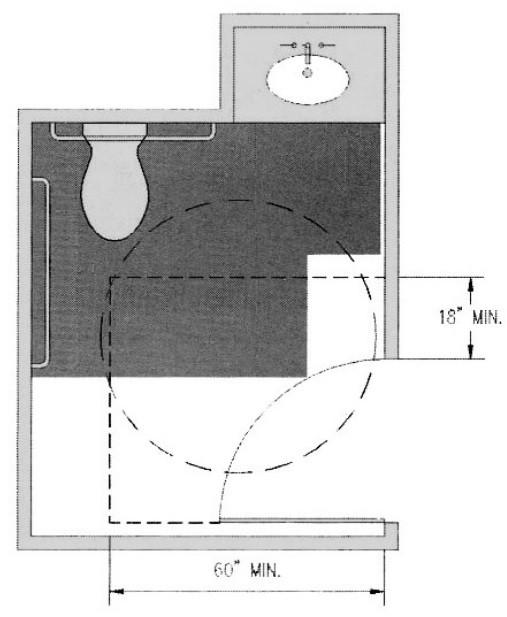
Where doors swing out, the turning space typically determines the minimum room depth.
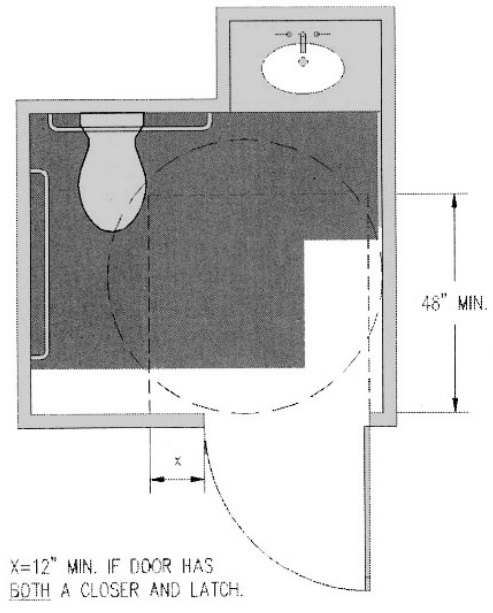
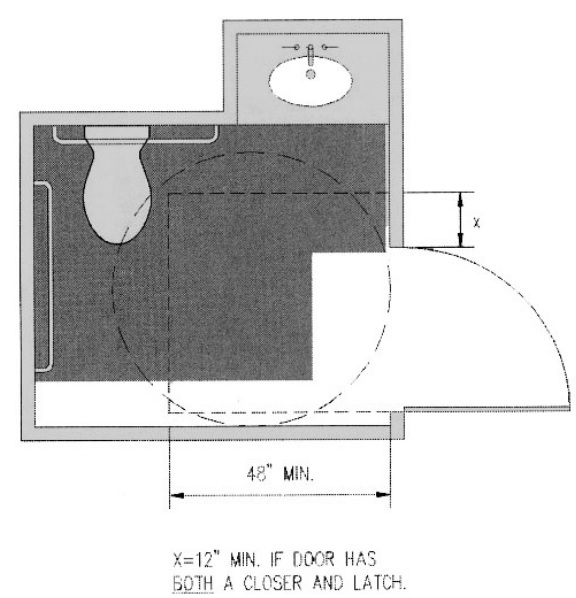
Lavatories can also be recessed on a side wall. Where plumbing is split, clear floor space at the water closet must allow side transfer (i.e., be at least 60 inches wide). As with the previous layouts, in-swinging doors clearing fixture clearances usually determine the minimum room depth. (Doors can also be located on the wall opposite the water closet). Door clearances and turning space usually determine the minimum room depth where doors swing out (not shown).
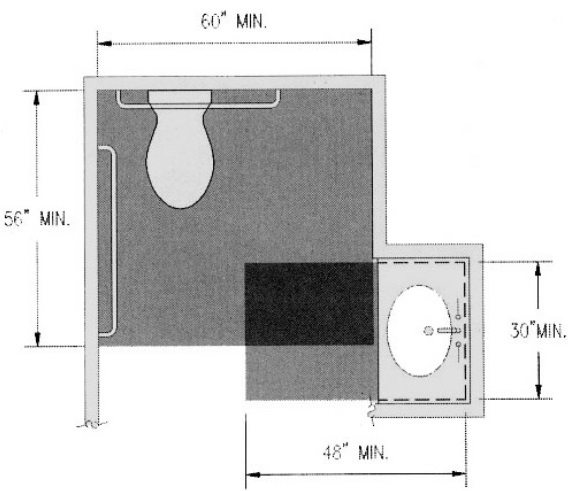
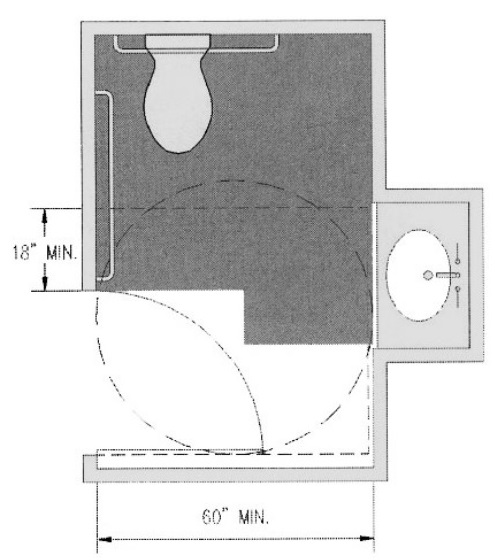
Single-User Toilet Rooms: Split Plumbing
Water closets and lavatories can be located on opposing walls. Note that lavatories (and other fixtures) cannot overlap door maneuvering clearances, including latch-side clearances. While the knee and toe clearance required at lavatories may allow a forward approach to door hardware, if placed in the maneuvering space, lavatories interfere with wheelchair maneuvering through doors.
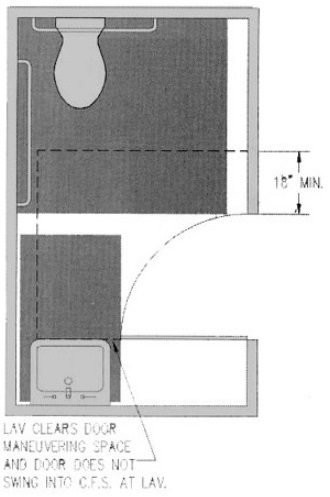
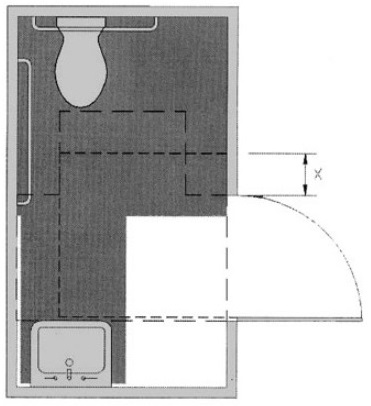
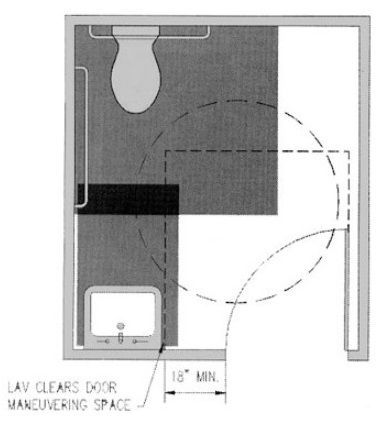
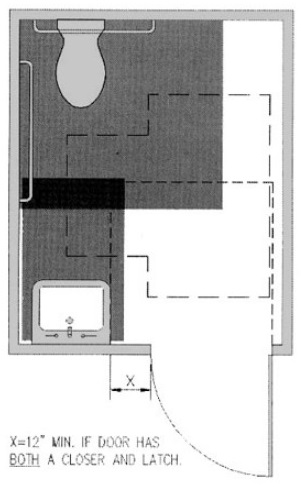
If T-shaped turning space is provided, it should be located to provide an easy approach (i.e., one of the segments aligned with the route into the room). Fixtures with knee or toe clearance can overlap turning space, but fixture overlap should be limited to one segment of the T (see page 15).
Single-User Toilet Rooms: No Side Transfer Space
On single plumbing walls, lavatories can overlap water closet clear floor space although this precludes side transfers. Lavatory placement is limited by the rear gab bar, which should not overlap counter surfaces.
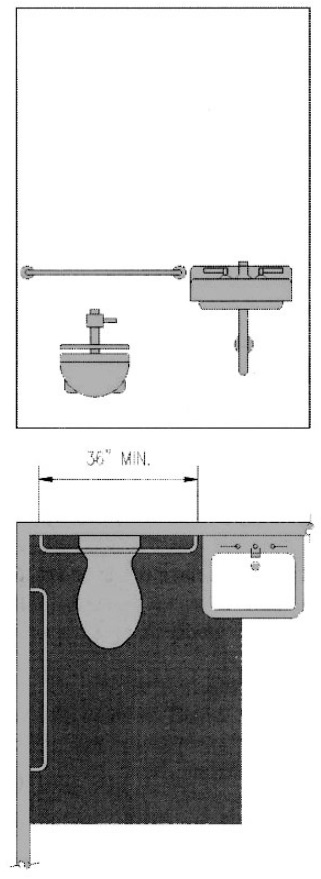
Where side transfer space is not provided, clear floor space for water closets is dimensioned for diagonal or perpendicular transfers based on the approach. Door clearances and turning space, as shown in the preceding examples, further determine minimum room dimensions.
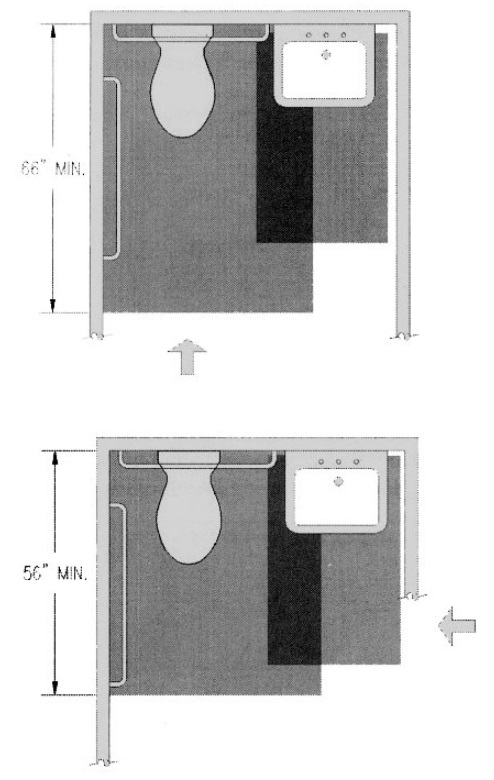

User Comments/Questions
Add Comment/Question